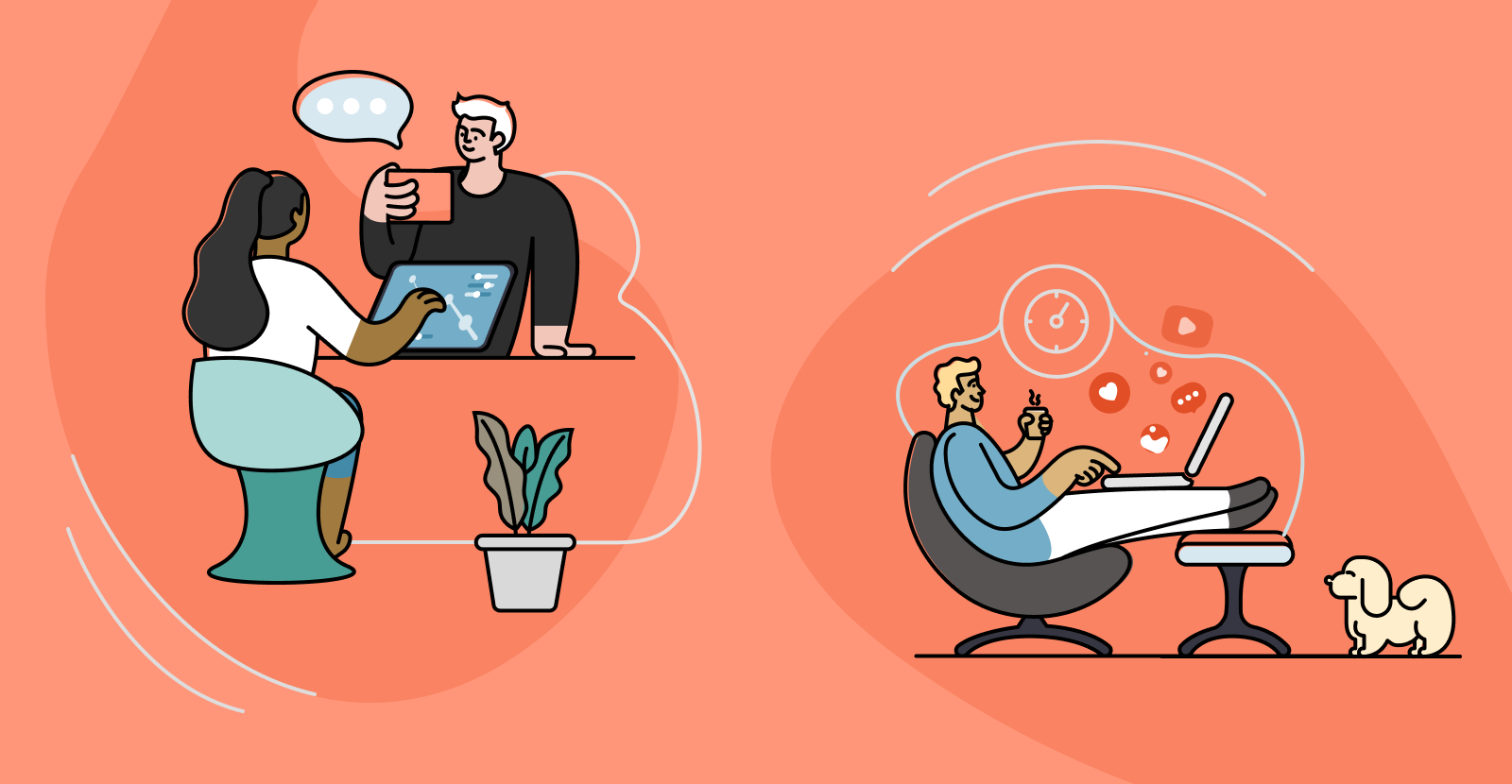Get in touch
Great workplace experiences don't happen by accident; they are designed

Thanks to COVID-19 we have all seen or experienced a seismic shift in both the workplace and workplace culture. Employees are demanding more from the companies they work for, and it is essential leaders find ways to respond in order to avoid losing key talent.
What are we already seeing in the workplace?
- Companies are taking a remote-first approach to their employee experience – with many employees working remotely for the majority of the time.
- Employees see their work as more than a "9-5"; they seek meaningful work, with companies who share their values, and where they feel confident they can easily build relationships and experiences.
- Workplaces are becoming more human-centric; There is a spotlight on supporting individual needs and designing an environment that supports employees wellbeing, as well as increasing productivity.
The future of the physical workplace
During the pandemic, many organisations mastered the challenge of equipping their staff for their home office. Now, there is an urgent need to reconfigure the traditional office in addition to bolstering remote work capabilities. In order to compete for the best talent, forward thinking organisations are enabling employees to work from wherever they want, whenever they want.
Whether working independently or working in person, the office space needs to adapt to cater for different modes of work. In her TED Talk, Susan Cain talked about most offices being open plan:
- "The workspace is designed mostly for extroverts and their need for lots of stimulation."
Whereas the workplace of the future needs to adapt in order to cater for different characteristics.
We believe the business case for investing in a purposefully designed workspace is clear; for example, Steelcase conducted research with 12,480 employees across 17 countries. The report found that workers who choose where and how they work and have a workspace to fit their task at hand, whether that be deep or collaborative work, were 88% more engaged.
Creating a meaningful workplace
Whilst it was a tough transition, employees have settled into working separately in their homes, but many have also recognised the value of that flexibility combined with human connection in the workplace.
The workplace is a key factor in fostering genuine connection and purpose, which is more difficult to achieve remotely. The great resignation also highlighted some of the deeper issues surrounding the disconnect between business values and the lived experience of work culture. Talented individuals are seeking meaningful work where they can see and feel the authenticity of an organisations purpose reflected in everyone’s behaviour.
- "By 2030, Generation Z will be a key part of the workforce who will want to see that leaders are invested in the causes that matter to them and, as a result, be inclined to work harder for a company that shares their values"
Source: Unily report: Future Of The Workplace 2030+
What is clear, is that adapting your employee experience to meet evolving employee needs will help retention, reduce attrition, and build powerful connections across your workforce.
The emergence of the emotional workplace
Working from home has created a venerability within teams. With pets, friends & family walking past in the background of online meetings, we've seen people's behaviours change as they open up about their life outside of work. As a result, we believe businesses will need to adapt and show a deeper care for their employee's wellbeing.
- "Companies face the economic burden of sickness and stress, both in medical expenses and lost productivity."
Source: Korn Ferry's Future of work Trends 2022
Offices are an opportunity to build on these deeper connections, with co-workers’ wellbeing at the core of their employee experience. We think that a human-centric, considered workspace, ensures employees are both productive and feel supported.
What does this all mean for leaders?
We think the time to design tomorrow's employee experience is now.
Organisations have come a long way since COVID-19 changed how we all work, but for many organisations there is still some way to go.
Remote, hybrid and flexible working options are here to stay, and companies must deeply consider how they reconfigure both physical offices and remote work capabilities. One of the rewards for those that successfully transform their employee experience and their workplaces, will be a clear competitive advantage, as they attract and retain the best talent and drive productivity across their teams.
The tangible benefits of an engaged workforce
- 41% reduction in absenteeism
- 24-59% less turnover
- 20% increase in sales
- 17% increase in productivity
Source: PwC US CFO Pulse Survey
There has never been a better and more critical time to design and transform your employee and workplace experience.
If you think your company could benefit from a human centred approach to design your employee experience, please get in touch. You can book time with a member of our team below.
Designing the workforce and workplace experience
We’re all becoming used to services that are more personalised, proactive, real-time and rewarding...New ways of working: How can we design for the changing ways people work?
We are all still adapting to new ways of working. And with this in mind, we must ensure we are...Designing for professional services
Regardless of the industry in which we work, we cannot control customers’ expectations of the...Book time with a service design expert.
Discover the transformative power of service design and unlock the full potential of your business. Get in touch with our service design experts today and start improving or innovating your services and customer experience.
